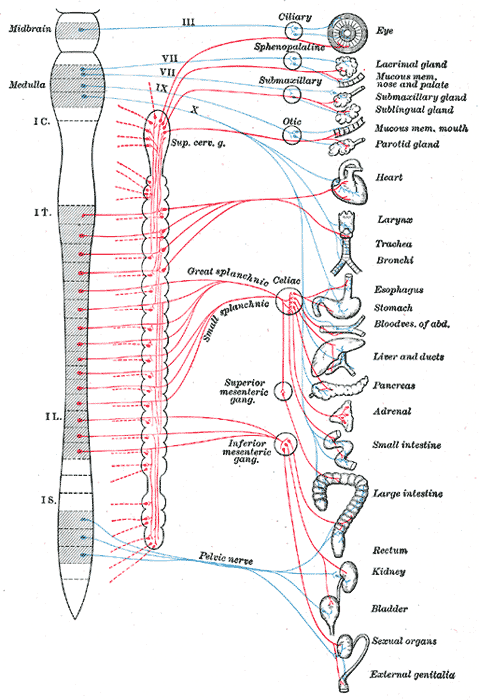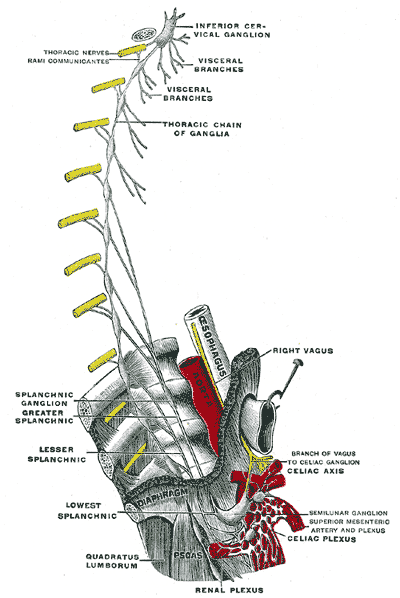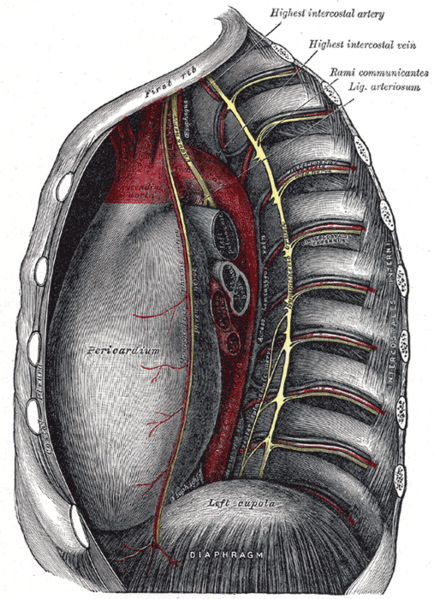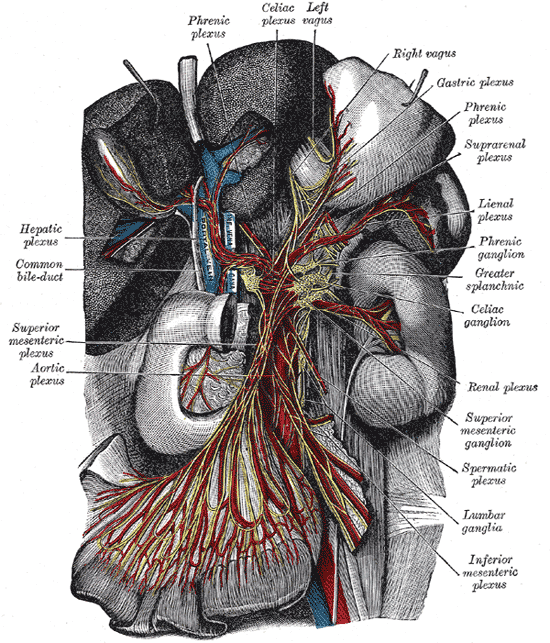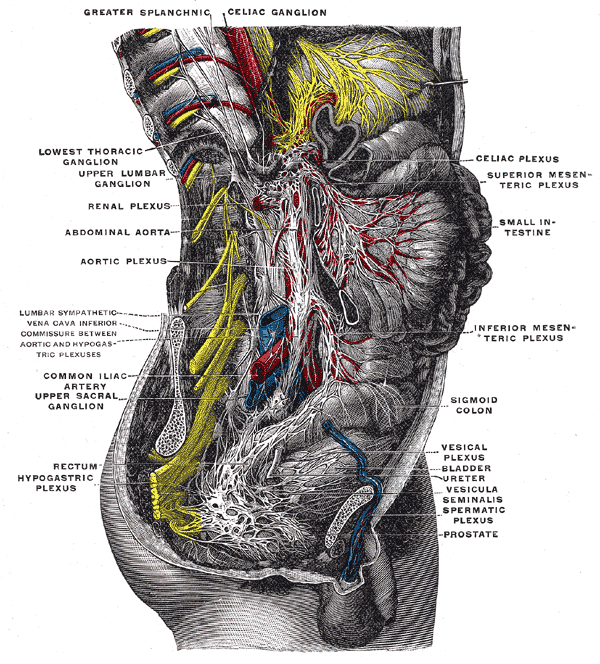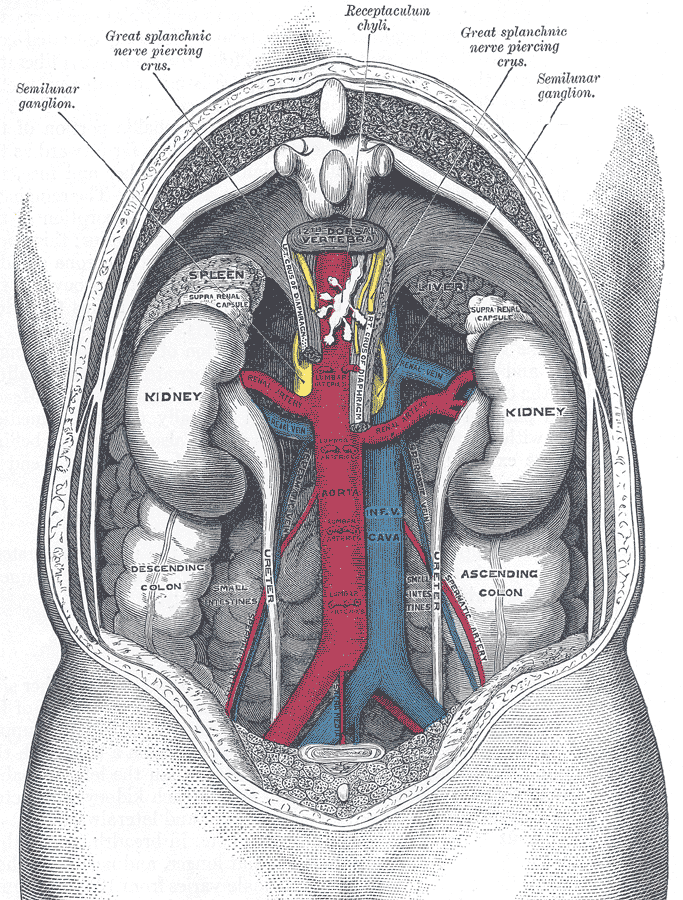Thoracic splanchnic nerves
Template:Infobox Nerve Editor-In-Chief: C. Michael Gibson, M.S., M.D. [1]
Thoracic splanchnic nerves arise from the sympathetic trunk in the thorax and travel inferiorly to provide sympathetic innervation to the abdomen. The nerves contain preganglionic sympathetic and visceral afferent fibers.
There are three main thoracic splanchnic nerves:
| Name | Ganglia | Description |
| greater[1] | T5-T9[2] or T5-T10[3] | The nerve travels through the diaphragm and enters the abdominal cavity, where its fibers synapse at the celiac ganglia. The nerve contributes to the celiac plexus, a network of nerves located in the vicinity of where the celiac trunk branches from the abdominal aorta. The fibers in this nerve modulate the activity of the enteric nervous system of the foregut. They also provide the sympathetic innervation to the adrenal medulla, stimulating catecholamine release. |
| lesser[4] | T9-T12, T9-T10[4][5], T10-T12, or T10-T11[3] | The nerve travels inferiorly, lateral to the greater splanchnic nerve. Its fibers synapse with their postganglionic counterparts in the celiac ganglia, or in the aorticorenal ganglion. The nerve modulates the activity of the enteric nervous system of the midgut. |
| least or lowest[6] | T12-L2, or T11-T12[7] | The nerve travels into the abdomen, where its fibers synapse in the renal ganglia. |
The nerve's origins can be remembered by the "4-3-2 rule", accounting for the number of ganglia giving rise to each nerve. However, different sources define the nerves in different ways, so this rule may not always be reliable.
Additional images
-
Diagram of efferent sympathetic nervous system.
-
Plan of right sympathetic cord and splanchnic nerves.
-
Thoracic portion of the sympathetic trunk.
-
The celiac ganglia with the sympathetic plexuses of the abdominal viscera radiating from the ganglia.
-
Lower half of right sympathetic cord.
-
The relations of the viscera and large vessels of the abdomen. Seen from behind, the last thoracic vertebra being well raised.
References
External links
- Template:EMedicineDictionary
- Template:SUNYAnatomyFigs - "The position of the right and left vagus nerves, and sympathetic trunks in the mediastinum."
- Template:SUNYAnatomyLabs - "Posterior Abdominal Wall: The Celiac Plexus"
- Template:GPnotebook
- Template:DartmouthHumanAnatomy
- Template:DartmouthHumanAnatomy
